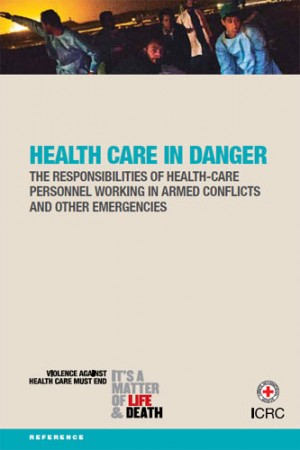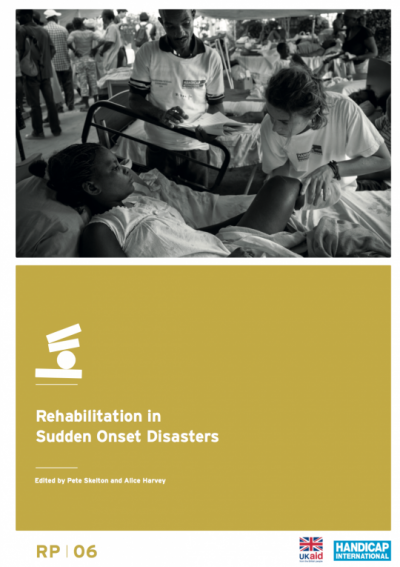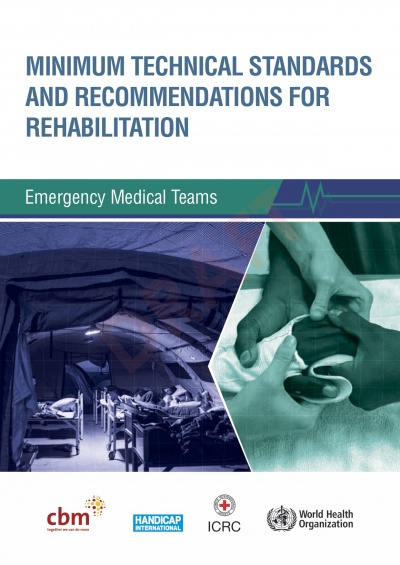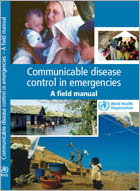Disaster Management
Original Editor - Naomi O'Reilly
Top Contributors - Naomi O'Reilly, Tony Lowe, Kim Jackson, Admin, Rachael Lowe, Vidya Acharya, Tarina van der Stockt, WikiSysop, Selena Horner, Laura Ritchie and Jess Bell
Introduction[edit | edit source]
Disaster, as defined by the United Nations, is a serious disruption of the functioning of a community or society, which involve widespread human, material, economic or environmental impacts that exceed the ability of the affected community or society to cope using its own resources. Disaster management is how we deal with the human, material, economic or environmental impacts of said disaster, it is the process of how we “prepare for, respond to and learn from the effects of major failures” (Elliott 2014). The International Federation of Red Cross & Red Crescent Societies defines disaster management as the organisation and management of resources and responsibilities for dealing with all the humanitarian aspects of emergencies, in particular preparedness, response and recovery in order to lessen the impact of disasters.
Natural disasters and armed conflict have marked human existence throughout history and have always caused peaks in mortality and morbidity. This article examines the advances in the humanitarian response to public health over the past fifty years and the challenges currently faced in managing natural disasters and armed conflict[1].
Types of Disaster[edit | edit source]
Natural Disasters[edit | edit source]
Including floods, hurricanes, earthquakes and volcano eruptions that have immediate impacts on human health and secondary impacts causing further death and suffering from (for example) floods, landslides, fires, tsunamis.
Environmental Emergencies[edit | edit source]
Including technological or industrial accidents, usually involving the production, use or transportation of hazardous material, and occur where these materials are produced, used or transported, and forest fires caused by humans.
Complex Emergencies[edit | edit source]
Involving a break-down of authority, looting and attacks on strategic installations, including conflict situations and war.
Pandemic Emergencies[edit | edit source]
Involving a sudden onset of contagious disease that affects health, disrupts services and businesses, brings economic and social costs.
Aspects of Disaster Management[edit | edit source]
Disaster Prevention[edit | edit source]
Disaster Preparedness[edit | edit source]
Disaster Relief[edit | edit source]
Disaster Recovery[edit | edit source]
How physiotherapists / physical therapists can contribute[edit | edit source]
The WCPT provide advice on how physiotherapists can most effectively contribute in disaster situations highlighting the role for the profession in all four aspects of disaster management described above.
Disaster Management Guidelines[edit | edit source]

|
A Guidance Document in simple language for health personnel, setting out their rights and responsibilities in conflict and other situations of violence. It explains how responsibilities and rights for health personnel can be derived from international humanitarian law, human rights law and medical ethics. The document gives practical guidance on:
|

|
Rehabilitation in Sudden Onset Disasters. The role of rehabilitation professionals in responding to sudden onset disasters, such as earthquakes or tsunamis, is evolving rapidly, and they increasingly find themselves at the forefront of emergency response teams. This manual is designed for Physiotherapists and Occupational Therapists who provide rehabilitation in the immediate aftermath of a sudden onset disaster. It was developed to support volunteers on the UK International Emergency Trauma Register, but with the aim of being relevant to all rehabilitation professionals interested in rapid deployment to austere environments. |

|
Minimum Technical Standards and Recommendations for Rehabilitation: Emergency Medical Teams This document is the result of collaboration between a working group of rehabilitation experts convened by WHO and external consultations. It is thus based on collective experience in rehabilitation during responses to recent large-scale emergencies and also on published data. In time, the minimum standards for rehabilitation in emergencies will be part of a broader series of publications based on the Classification and minimum standards for foreign medical teams in sudden onset disaster. The purpose of this document is to extend these standards for physical rehabilitation and provide guidance to Emergency Medical Teams (EMTs) on building or strengthening their capacity for and work in rehabilitation within defined coordination mechanisms.The standards and recommendations given in this document will ensure that EMTs, both national and international, will better prevent patient complications and ensuing impairment and ensure a continuum of care beyond their departure from the affected area. |

|
Communicable Disease Control in Emergencies - A Field Manual This manual is intended to help health professionals and public health coordinators working in emergency situations prevent, detect and control the major communicable diseases encountered by affected populations. |
Resources[edit | edit source]
Recent Related Research (from Pubmed)[edit | edit source]
Extension:RSS -- Error: Not a valid URL: Feed goes here!!|charset=UTF-8|short|max=10
References[edit | edit source]
References will automatically be added here, see adding references tutorial.
- ↑ Leaning J, Guha-Sapir D. Natural Disasters, Armed Conflict, and Public Health. New England Journal of Medicine. 2013 Nov 7;369(19):1836-42






